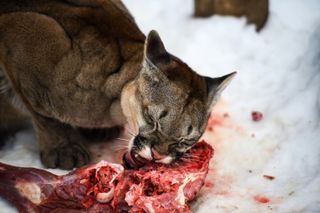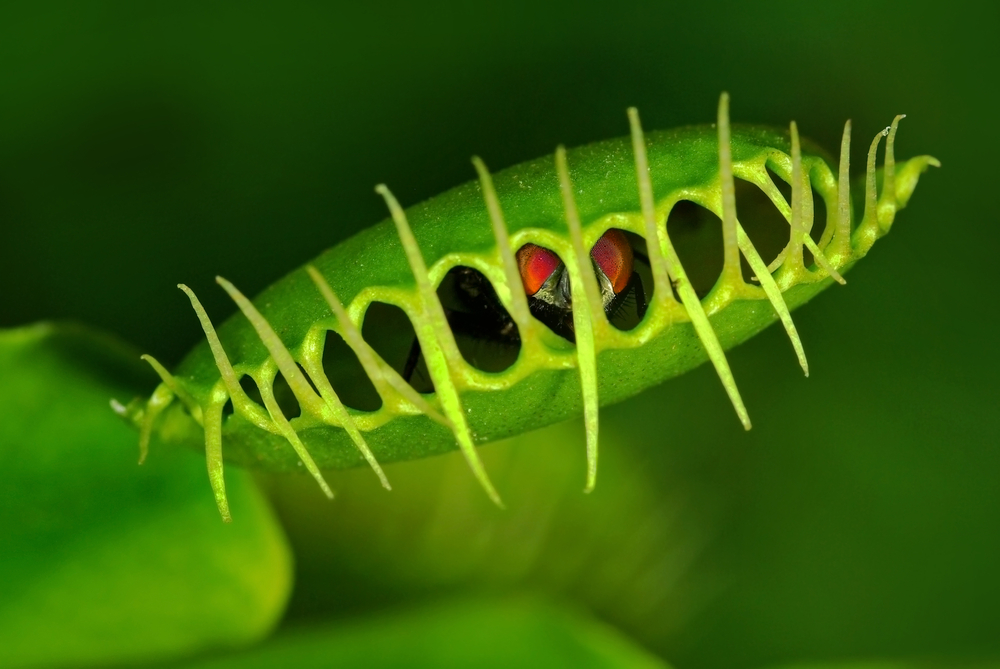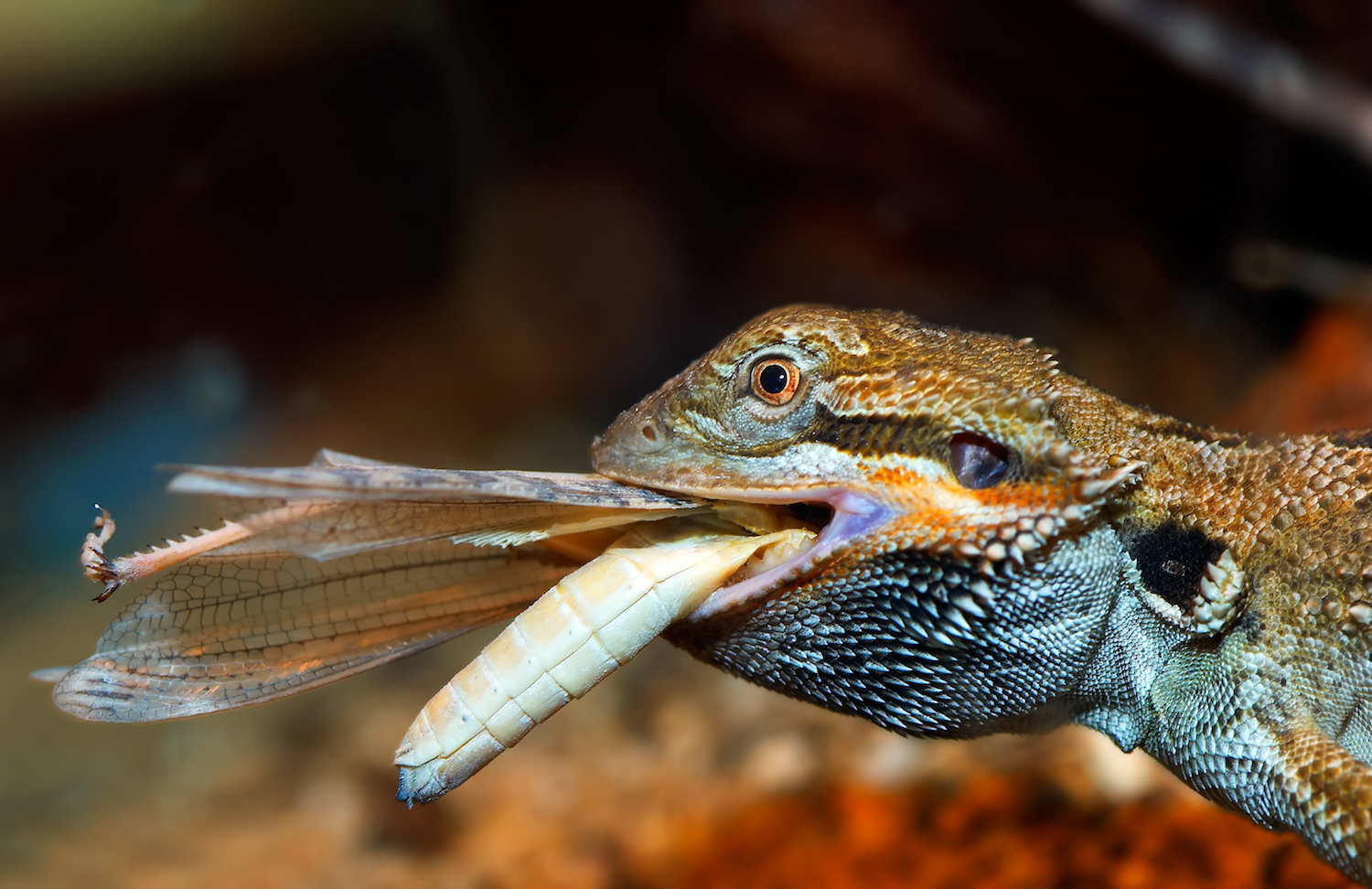What Meat Eaters Animals Live In South America
Carnivores: Facts Well-nigh Meat Eaters

A carnivore is an animal or plant that eats the flesh of animals. About, but not all, carnivorous animals are members of the Carnivora society; merely, not all members of the Carnivora guild are carnivorous.
"A carnivore is simply any species that eats meat, and this tin range from carnivorous plants and insects to what nosotros typically retrieve of when nosotros hear the discussion carnivore, like tigers or wolves," said Kyle McCarthy, an assistant professor of wildlife ecology in the University of Delaware's College of Agriculture and Natural Resources.
Carnivora — or "flesh devourers," in Latin — is an order of placental mammals that includes canids such as wolves and dogs, felids (cats), ursids (bears), mustelids (weasels), procyonids (raccoons), pinnipeds (seals) and others, according to Encyclopedia Britannica. The club consists of 12 families and 270 species in all.
While some carnivores eat only meat, other carnivores also supplement their diets with vegetation on occasion. For example, near bears are omnivores, which means they eat both plants and meat, McCarthy explained.
Carnivorous plants
Animals aren't the only carnivores — there are more than than 600 species of carnivorous plants, co-ordinate to the Botanical Society of America. These plants become at least some of their nutrients by trapping and digesting insects and sometimes even small frogs and mammals. Because the most common prey for most cannibal plants are insects, these leafy flesh-eaters are also chosen insectivorous plants.
While nearly plants absorb nitrogen from the soil through their roots, carnivorous plants get nitrogen from animate being prey that gets trapped in their modified leaves. The traps work in diverse ways. A Venus flytrap (Dionea muscipula), for example, has hinged leaves that snap shut when trigger hairs are touched. A pitcher found has a pitfall trap; its leaves fold into deep pits filled with digestive enzymes. And sundews and butterworts accept viscous mucus on their stalks that stops insects in their tracks.

Carnivore types
There are three dissimilar categories of carnivores based on the level of meat consumption: hypercarnivores, mesocarnivores and hypocarnivores.
Carnivores that consume mostly meat are called hypercarnivores. These creatures are considered obligate carnivores considering they cannot properly digest vegetation and accept a nutrition that consists of at least 70 pct meat, according to National Geographic. The cat family, including lions, tigers and small-scale cats, for example, are obligate carnivores, as are snakes, lizards and most amphibians.
Many hypercarnivores, including some members of the Carnivora society, accept heavy skulls with strong facial musculature to aid in holding prey, cutting flesh or grinding basic. Many also take a special fourth upper molar and get-go lower tooth. "They shut together in a shearing activeness, like scissors, which allows [the] animals to slice meat from their prey," said McCarthy. These two teeth together are called the carnassial teeth.
A rare example of a hypercarnivore that does not take carnassial teeth is the crabeater seal. It has teeth that strains tiny zooplankton such as krill from the water, according to the University of Michigan'south Animate being Multifariousness Web (ADW). Carnivorous baleen whales, which take no teeth at all, utilize a like strategy to strain krill from bounding main h2o. Their mouths comprise rows of stiff, flexible baleen plates made of keratin, the same protein that'south in human fingernails.
Animals that depend on meat for at to the lowest degree 50 percent of their diet are called mesocarnivores. Forth with meat, these animals will also swallow fruits, vegetables and fungi. Mesocarnivores are typically small to mid-size species and oftentimes live close to human populations. Raccoons, foxes and coyotes are examples of mesocarnivores.
Hypocarnivores are carnivores that consume the to the lowest degree corporeality of meat — less than 30 percentage of their diet, according to National Geographic. These animals, which tin also be considered omnivores, eat fish, berries, basics and roots, as well equally meat.
Size
The world's largest animate being is also the globe'due south largest carnivore. The bluish whale (Balaenoptera musculus) grows up to 100 feet (30 meters) long and weighs up to 200 tons (180 metric tons). The largest carnivore on state is the polar bear, which can weigh 800 to 1,300 lbs. (363 to 590 kilograms), and tin can grow to nine feet long (3 chiliad) from nose to tail, according to World Wildlife Fund. The smallest carnivorous mammal is the least weasel. It grows no more than sixteen inches long (twoscore.6 centimeters) and weighs virtually 7 ounces (198 grams).

Characteristics of carnivores
Though carnivores come in many shapes and sizes, they share a few similarities. Virtually carnivores have relatively large brains and high levels of intelligence. They too accept less complicated digestive systems than herbivores. For example, many herbivores have multiple stomachs, while carnivores just accept one, co-ordinate to Encyclopedia Britannica.
Though all carnivores eat meat at some level, the frequency of their feeding can vary. Warm-blooded carnivores tend to fire a lot of calories. Because of this, they accept to hunt and eat often to proceed to continue upward their energy levels. Common cold-blooded carnivores, on the other mitt, utilize fewer calories and tin can balance days or even months between meals.
Carnivores as part of the nutrient web
Carnivores sit at the third trophic level in the food spider web, along with omnivores. Carnivores eat other carnivores, likewise as herbivores and omnivores, depending on their species, according to National Geographic.
As the height tier of the food web, carnivores proceed the populations of other animals in check. If a carnivore population is wiped out by illness, natural disasters, human being intervention or other factors, an area tin can experience an overpopulation of other creatures lower in the nutrient chain.
Sometimes, carnivores volition be brought into an area to assist with overpopulation of herbivores. For example, wolves were reintroduced to Yellowstone National Park in 1995 — afterwards being eradicated from the region lxx years earlier — to help reduce the elk population. Eventually, this reintroduction allowed woody plants to recover from the consumption of also many elk, co-ordinate to the University of Michigan.
Further reading:
- Oxford Journals: The Ecological Function of the Mammalian Mesocarnivore
- U.Due south. Forest Service: The Status and Conservation of Mesocarnivores in the Sierra Nevada
- Wildlife Conservation Gild: Mesocarnivores of Northeastern Due north America
This article was updated on Dec. 4, 2018 past Live Science Senior Writer, Mindy Weisberger.
Source: https://www.livescience.com/53466-carnivore.html
Posted by: tolivertione1970.blogspot.com


0 Response to "What Meat Eaters Animals Live In South America"
Post a Comment